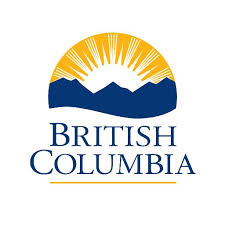assessment
Type of resources
Available actions
Topics
Keywords
Contact for the resource
Provided by
Formats
Representation types
Update frequencies
status
-

The dataset contains projects that are currently, or have been, subject to environmental assessment review. Attributes include the project description, project phase, decision, and proponent name. This layer consists of points themed two ways: a. Project Phase- This theme consists of layers showing what phase each project is in - pre-EA, application review, post-decision, and withdrawn or terminated; and b. Project Type - This theme consists of nine layers that reflect the potential types of projects under review. This dataset is coming from the EAO Project Information Centre (EPIC) and is updated daily. For more information on any of the project points go to https://projects.eao.gov.bc.ca/.
-

This data set was created upon direction from Yukon Government, DIAND, Yukon Region and CYFN following consultations with citizens of Carcross, Ross River, Old Crow and Beaver Creek. The maps for Burwash Landing, Destruction Bay, Pelly Crossing and Deep Creek reflect the community boundaries of the respective First Nation Final Agreements. Distributed from [GeoYukon](https://yukon.ca/geoyukon) by the [Government of Yukon](https://yukon.ca/maps) . Discover more digital map data and interactive maps from Yukon's digital map data collection. For more information: [geomatics.help@yukon.ca](mailto:geomatics.help@yukon.ca)
-

Property assessment parcels for New Brunswick.
-
Water quality and ecosystem health data used to conduct a cumulative effects assessment of Canadian Great Lakes nearshore waters in support of the Great Lakes Water Quality Agreement are included in this dataset. The data was collected by various government and non-government agencies and organizations and integrated into this dataset to allow the assessment to be conducted. By conducting a regular, systematic assessment of cumulative effects in the nearshore waters of the Great Lakes Environment and Climate Change Canada (ECCC) is able to identify areas of high quality and areas under stress. Knowledge of ecological thresholds, other Great Lakes assessments, stressor information, indicators and local and traditional ecological knowledge will be used to aid in: 1) the identification and mapping of high quality nearshore areas and areas that are or may become subject to high stress and; 2) the determination of factors and cumulative effects that are causing stress or threats. Cumulative effects impacting the nearshore and future threats to areas of high ecological value will be better understood and the knowledge shared will assist in priority setting for science and management at a meaningful and practical spatial scale within each Great Lake and connecting channel.
 Arctic SDI catalogue
Arctic SDI catalogue